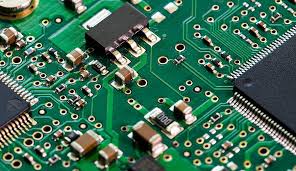Selecting the Right Materials
Correct substrate choice is important, but also it is essential to choose a copper which makes your PCB perform. High TG FR-4 and polyimide are available when maximum heat resistance and mechanical stability are required for high-performance applications that exceed the performance level of standard FR-4. This means they can be used in automotive and aerospace electronics, which must survive operating temperatures greater than 150°C. As far as conductive materials are concerned, the copper layer thickness can affect how well a PCB is able to carry current. For example, 1 oz/ft² copper is able to support roughly 1.4 amp without significant heating and a 2 oz/ft² layer can carry about twice that current.
Precision in Circuit Design
It goes without saying that you will need proper circuit design in line. Elements such as trace width, spacing and vias need to be taken into account during the design process in order to manage connectivity and current capacity. If you have signal traces carrying little current 0.1mm maybe would suffice whereas power circuits need to carry higher amperages will require a trace width of 0.5 mm or more in order to prevent overheating and guarantee proper functionality.
Future Technology trends are : Advanced Manufacturing Technique
This is done by using the latest manufacturing technologies to get high-quality outputs. Today, in the modern era of pcb fabrication these have become stand procedures like laser drilling or direct imaging. For HDI boards, laser drilling even enables the fabrication of microvias as small as 75 microns in diameter. For finer lines and spaces in more complex circuit designs, direct imaging offers better overlay control over the use of traditional phototools.

Effective Thermal Management
The thermal management of PCB is necessary to keep it more reliable. Features such as thermal vias and heat sinks can be integrated into the PCB design, which will help to minimize overheating in many cases. These vias carry heat away from hot components to other parts of the board or an external heat sink, reducing operational temperature by up to 10°C and extending the life for heat-sensitive components by a factor of two.
Stringent Quality Controls
Systematic testing and quality control are essential to the reliability of any product. All PCB batches should pass through stages like Automated Optical Inspection (AOI), In-Circuit Testing (ICT) and functional test to identify any future failures before the boards are assembled and deployed. Implemented protocols can reduce final product field failures by up to 75 per cent, according to figures, improving the quality of products.
Thus, PCB fabricators need to focus on the right materials, precise design, cutting-edge manufacturing techniques, integrated thermal management and stringent quality control measures that can help them deliver top-performance products capable of supporting high-end demands made by modern electronic devices. Every piece plays an important role in the development of the end product, affecting things like durability all the way up to performance under increased application loads.